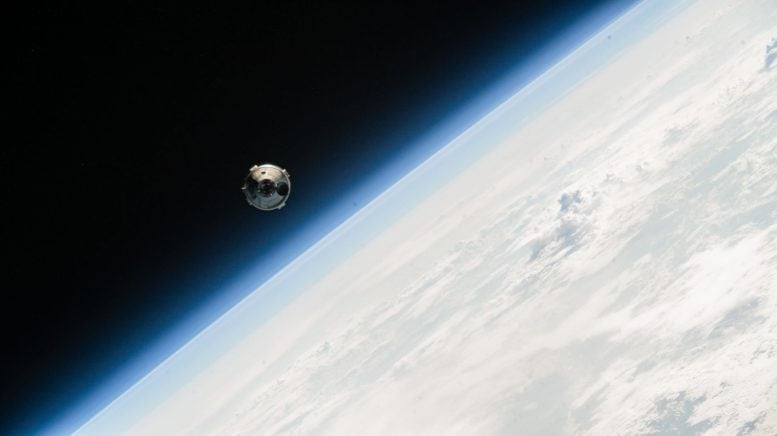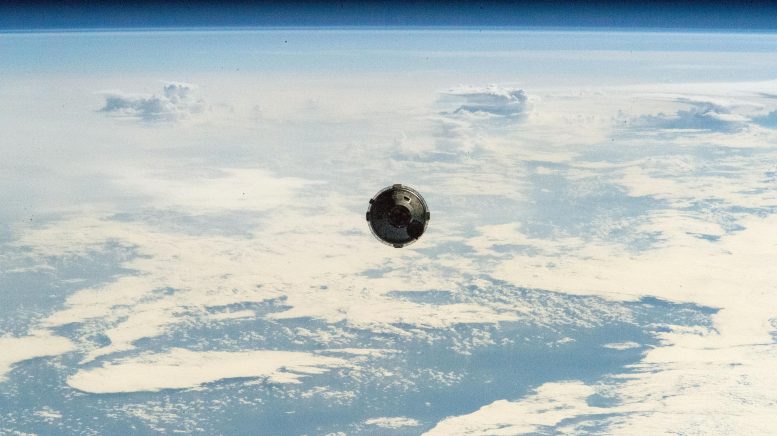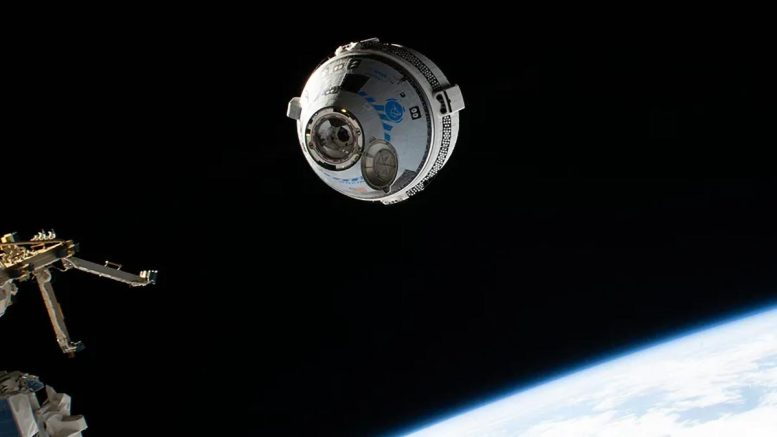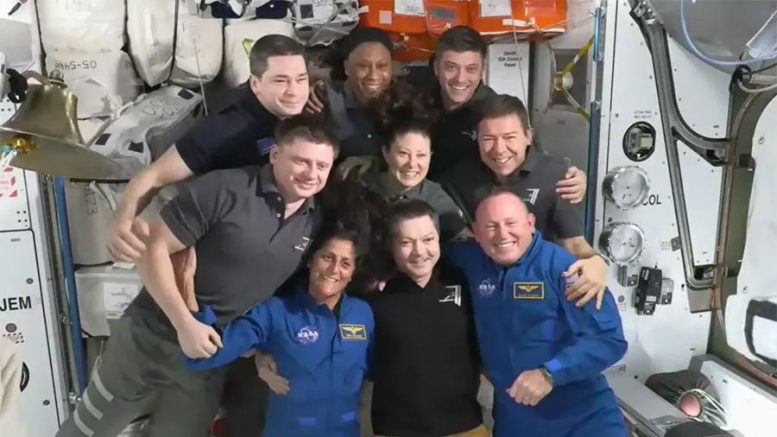Boeing Starliner’s High-Stakes Docking Drama


Boeing’s Starliner spacecraft, with NASA astronauts Butch Wilmore and Suni Williams aboard, approaches the International Space Station for an autonomous docking as it orbited 257 miles above the South Pacific Ocean. Credit: NASA Television
Astronauts Butch Wilmore and Suni Williams aboard the Starliner spacecraft docked successfully at the ISS after overcoming challenges like helium leaks and thruster failures. The flight included manual piloting demonstrations and strategic management of spacecraft systems to ensure a successful docking.
NASA astronauts Butch Wilmore and Suni Williams, aboard Boeing’s Starliner spacecraft, successfully docked to the International Space Station (ISS) at 1:34 p.m. EDT. Starliner’s hatch opening began at about 3:20 p.m., and the pair of astronauts entered the ISS at 3:45 p.m. Starliner launched on a United Launch Alliance Atlas V rocket at 10:52 a.m., June 5 from Space Launch Complex-41 at Cape Canaveral Space Force Station in Florida.

Boeing’s Starliner spacecraft is pictured approaching the International Space Station for an autonomous docking on June 6, 2024 as the spacecraft and orbiting laboratory soared 257 miles above the South Pacific Ocean. Starliner launched on June 5, with NASA astronauts Butch Wilmore and Suni Williams aboard, as part of NASA’s Boeing Crew Flight Test. This first crewed flight of Starliner aims to certify the spacecraft for rotational missions to the space station. Credit: NASA
During flight, Wilmore and Williams successfully performed manual piloting demonstrations of Starliner and completed a sleep period. Prior to crew sleep, mission teams identified three helium leaks in the spacecraft. One of these was previously discussed before flight along with a management plan, and the other two occured when the spacecraft arrived in orbit. To monitor and manage these leaks, the three helium manifolds were closed in flight during the crew’s sleep period and were all reopened ahead of rendezvous and docking operations. After docking, all Starliner manifolds are closed per normal plans.

Boeing’s Starliner crew ship approaches the space station during the company’s uncrewed Orbital Flight Test-2 mission on May 20, 2022. Credit: NASA
As Starliner began its approach to the space station, five reaction control system thrusters failed during flight. Mission teams performed a series of hot-fire tests which re-enabled four of the thrusters while the crew manually piloted the spacecraft at the station’s 200-meter hold point. After re-selecting four of the thrusters, Starliner had the fault tolerance required to approach the space station for docking. At the 10-meter hold point, the mission team completed system readiness evaluations and proceeded with docking.

The seven Expedition 71 crew members gather with the two Crew Flight Test members for a team portrait aboard the space station. In the front from left are, Suni Williams, Oleg Kononenko, and Butch Wilmore. Second row from left are, Alexander Grebenkin, Tracy C. Dyson, and Mike Barratt. In the back are, Nikolai Chub, Jeanette Epps, and Matthew Dominick. Credit: NASA TV
NASA’s Boeing Crew Flight Test
NASA’s Boeing Crew Flight Test (CFT) is a pivotal mission for the Commercial Crew Program, which aims to facilitate the development of U.S.-led crewed spaceflight capabilities. This test flight, conducted in partnership between NASA and Boeing, involves the CST-100 Starliner spacecraft. The mission’s primary goal is to demonstrate the Starliner’s ability to safely transport crew to and from the International Space Station (ISS).
The Crew Flight Test is Boeing’s first crewed mission, following an uncrewed test flight that assessed the spacecraft’s performance without a crew. The CFT will carry NASA astronauts to the ISS, where they will dock, stay aboard for a short duration, and then return to Earth. This mission serves as a crucial step in certifying the Starliner for regular operational missions, enabling NASA to have another reliable method of transporting astronauts to and from the ISS alongside SpaceX’s Crew Dragon.
Success in this mission will mark a significant milestone for Boeing, showcasing its ability to fulfill NASA’s commercial crew transportation needs. The Crew Flight Test is designed not only to validate the spacecraft’s systems in a real-world crewed scenario but also to ensure that it meets NASA’s stringent safety standards for human spaceflight.


